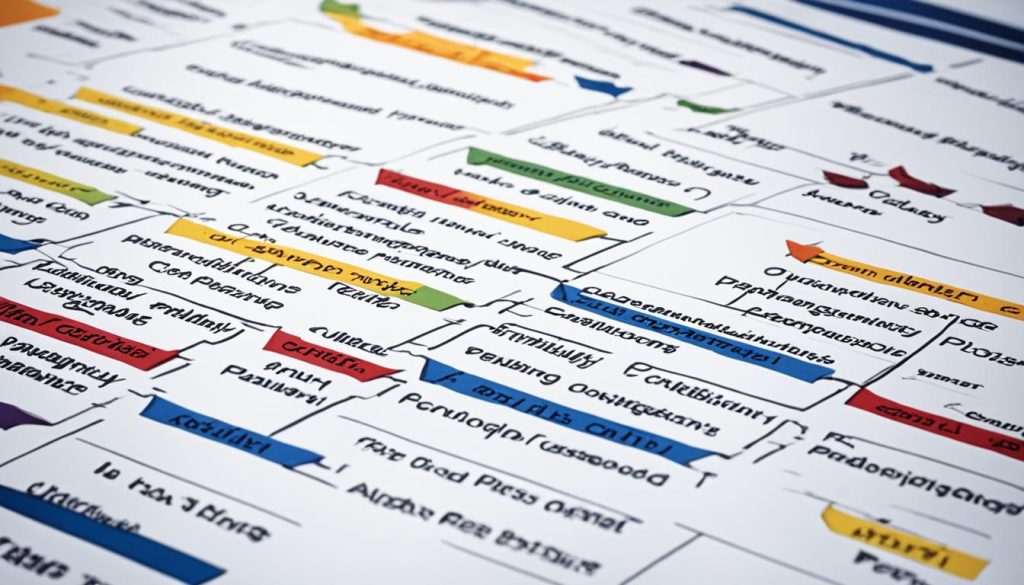What is Contingency Planning?
Contingency planning is a proactive approach to prepare for unforeseen events that could disrupt normal business operations. It involves identifying potential risks and developing strategies to mitigate their impact, ensuring that a business can continue to function smoothly even in challenging circumstances.
The goal of contingency planning is to minimise downtime, financial loss, and reputational damage by having a plan in place to address various scenarios. This could include natural disasters, such as floods or fires, as well as human-made crises like cyber-attacks or supply chain disruptions.
Key components of a contingency plan typically include:
- Risk assessment: Identifying potential threats to the business.
- Response planning: Developing strategies to respond to each type of threat.
- Communication protocols: Establishing how information will be communicated during a crisis.
- Testing and revision: Regularly reviewing and updating the plan to ensure it remains effective.
By investing time and resources into contingency planning, businesses can enhance their resilience and ensure they are better prepared to navigate unexpected challenges.
Importance of Contingency Planning in Business
Contingency planning is an essential practice for businesses to ensure their resilience and preparedness in the face of unforeseen events. By proactively identifying and planning for potential risks, businesses can minimize the impact of disruptions and protect their operations.
There are several key reasons why contingency planning holds significant importance:
1. Minimizing Downtime and Disruption
By having a well-developed contingency plan in place, businesses can respond swiftly and effectively to any unexpected event, such as natural disasters, technological failures, or cyberattacks. This allows them to minimize downtime, reduce financial and reputational damage, and maintain the continuity of critical operations.
2. Reducing Financial and Reputational Damage
Contingency planning helps businesses mitigate financial losses caused by disruptions. Having a plan in place enables businesses to allocate resources efficiently, ensuring that funds are available to cover the costs of recovery and restoration. Additionally, effective contingency planning safeguards the company’s reputation by demonstrating preparedness and proactive response in challenging situations.
3. Improving Recovery Times
One of the key benefits of contingency planning is the ability to reduce recovery time. By outlining step-by-step action plans and clearly defining roles and responsibilities, businesses can streamline the recovery process. This enables swift decision-making, coordination, and implementation of strategies, ultimately leading to faster recovery and minimizing the impact on overall business operations.
4. Ensuring the Continuity of Critical Operations
Contingency planning is crucial for ensuring the uninterrupted functioning of critical business operations. Through comprehensive risk assessments and identification of potential vulnerabilities, businesses can prioritize their resources and efforts to safeguard their core operations. This ensures that essential services, product deliveries, and customer support remain unaffected during disruptive events.
Contingency Planning Best Practices
To make the most of contingency planning, businesses should follow these best practices:
- Conduct a thorough risk assessment to identify potential risks and vulnerabilities.
- Develop response strategies and action plans for different scenarios.
- Clearly communicate the contingency plan to all relevant stakeholders.
- Regularly test and update the plan to ensure its effectiveness.
- Involve key individuals from various departments and functions in the planning process.
- Stay updated on emerging risks and industry trends.
- Have a reliable backup system for critical data and resources.

Steps in the Contingency Planning Process
The contingency planning process involves several key steps. By following these steps, businesses can develop effective strategies to manage risks and ensure business continuity.
1. Risk Assessment
Begin the process by conducting a comprehensive risk assessment. Identify potential risks that may impact critical operations and strategic objectives. This step helps businesses prioritize risks based on their potential impact, allowing them to allocate resources efficiently.
2. Prioritization
Once risks have been identified, prioritize them based on their severity and likelihood of occurrence. Understand which risks pose the most significant threats to the business and require immediate attention. This prioritization ensures that resources are allocated effectively to address the most critical risks.
3. Response Strategies
Develop response strategies for each identified risk. Determine the best course of action to mitigate or manage the risks effectively. These strategies may involve implementing preventive measures, establishing early warning systems, or creating backup plans to minimize the impact of potential disruptions.
4. Resource Allocation
Determine the resources required to implement the response strategies. This may include financial resources, personnel, equipment, or technology. Allocate resources effectively to ensure the successful execution of the contingency plan.
5. Action Plans
Create action plans for different scenarios. Define specific steps and procedures to be followed in the event of each risk occurrence. These action plans should be clear, concise, and include trigger points that prompt the activation of the contingency plan.
6. Cross-Disciplinary Collaboration
Involve a cross-disciplinary group of people in the contingency planning process. Include leaders from various departments and support functions such as human resources and finance. This collaborative approach ensures diverse perspectives and expertise in developing comprehensive and robust contingency plans.
7. Regular Review and Update
Continuously review and update the contingency plans to account for changes within the organization and the external environment. Regular reviews help maintain the relevancy and effectiveness of the plans. Businesses should also conduct tests and simulations to ensure the readiness and efficiency of the contingency strategies.
By following these steps in the contingency planning process, businesses can strengthen their resilience, mitigate potential risks, and effectively respond to unexpected events.

Contingency Planning Examples and Best Practices
Successful contingency planning involves a careful assessment of potential risks and the development of strategies to address them. Here are some examples of contingency planning in various industries:
Example 1: Technology Company
A technology company may develop a contingency plan to protect against cyberattacks. This plan could include measures such as regular data backups, network security protocols, and employee training on cybersecurity best practices. By having a plan in place, the company can respond swiftly and effectively to a cyberattack, minimizing data breaches and system disruptions.
Example 2: Manufacturing Company
A manufacturing company may have a contingency plan to mitigate disruptions in the supply chain. This plan could involve maintaining relationships with multiple suppliers, setting up alternative distribution channels, and regularly reviewing inventory levels. By being prepared for potential supply chain disruptions, the company can minimize production delays and continue to meet customer demands.
Best practices for effective contingency planning include:
- Regularly reviewing and updating the contingency plan to reflect changes in the business environment and internal operations.
- Involving key stakeholders, such as senior management, department heads, and IT specialists, in the planning process to ensure a comprehensive and well-rounded approach.
- Considering similar scenarios that may have common impacts to streamline the planning process and improve response times.
- Ensuring clear and effective communication of the contingency plan to all relevant employees, outlining their responsibilities and actions during a crisis situation.
- Staying updated on credible sources of data and information to identify potential trigger points that may require activating the contingency plan.
By following these best practices, businesses can enhance their preparedness for unexpected events and minimize the impact on their operations.

Conclusion
Contingency planning is a critical tool for businesses, helping them prepare for and respond to unexpected events. By identifying potential risks, developing response strategies, and establishing trigger points, businesses can effectively minimize disruption, improve recovery times, and ensure the continuity of critical operations.
An effective contingency planning process involves regular updates and testing of the plan, as well as the active involvement of key stakeholders from various business units and support functions. It is important for businesses to recognize that contingency planning goes beyond just natural disasters and can be leveraged to support their strategic objectives and maintain a competitive advantage.
By implementing robust contingency plans, businesses can safeguard their long-term strategies, mitigate financial and reputational damage, and enhance their overall resilience. The benefits of contingency planning extend to all aspects of the business, including risk management, operational efficiency, and the ability to adapt to a rapidly changing business environment.





